One of the most pervasive views that I have worked hard against is that electric vehicles are small, slow, derivatives of golf carts. Golf carts may be slow, but electric vehicles never have been.
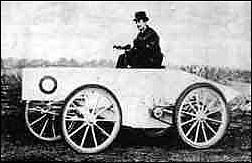
The Count Gaston de Chasseloup-Laubat of Paris, France on his electric vehicle the Jeantaud landspeed.com
I just want to set the record straight. The first speed record ever recorded for an automobile was done on December 18, 1898 in an electric vehicle.
On that day Count Gaston de Chasseloup-Laubat of Paris, France, became the fastest man alive. The Count had driven his speed demon electric vehicle Jeantaud to speeds never known before or experienced by any human. This speed was a phenomenal 39 miles for per hour. This auspicious event earned Count Gaston the nickname “the Electric Count.”
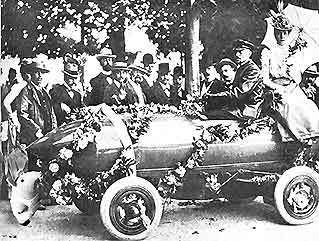
Belgian Camille Jenatzy on his electric vehicle the “Jamais Contente,” the Never Satisfied.
As word spread about this tremendous achievement, a Belgian Camille Jenatzy traveled to Acheres part of Paris to challenge the Count to a dual of sorts. In the Counts presence, on January 17, 1899, Camille Jenatzy took a CGA Dogcart powered by one 80 cell Fulmen lead acid battery passed the original record to 41.420 miles an hour.
The Electric Count, prompted by the challenge, immediately took out the Jeantaud and drove it to an unparalleled speed of 43.6 miles an hour the same day. Both challengers, having spent their batteries, separated themselves from the field of battle.
Not to be out done, Camille Jenatzy returned ten days later on January 27th and took his vehicle to 49.92 miles an hour. Annoyed by the persistent Belgian, the Count tweaked his vehicle and came out on March 4, with a renewed conviction to go faster. He did going 57.6 miles an hour. After reaching that speed I am sure he thought that the man in the Dogcart would never return to try to go faster than that. Camille Jenatzy was not satisfied with the results and vowed to return.
He returned on April 29th with his now famous artillery shaped “Jamais Contente” vehicle, modified with not one but two 80 cell Fulmen lead acid batteries. This time he was going for a TKO. He drove the “Jamais Contente,” which in English means Never Satisfied, faster then 100 kilometers per hour. He drove it to a record speed of 65.79 miles per hour. A speed that was truly unprecedented for the time. Nothing known at the time, neither man nor beast, had ever traveled as fast. Camille Jenatzy really was the turn of the century’s version of a steely-eyed missile man. The Electric Count simply could not match the challenge and the record stood until the insane imaginings of sewing machine manufacturer decided he could go faster.
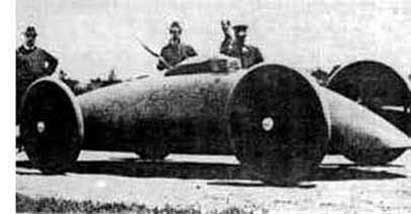
Walter C. Baker, seemed the straight-laced business man, yet he drove this bad boy to speeds that made him the fastest man alive. Histoire de la Voiture Electrique
Walter C. Baker was the genius son of a sewing machine manufacturer. Restless in his youth and brilliant as an inventor and an engineer, Walter was discontent with only making sewing machines. In college he had worked on the very first electric vehicles. He went on to establish an electric vehicle company and is credited with many contributions to automotive design, which include the first shaft drive, first use of alloy steel, first “full floating” ball bearing rear axle, first horseless delivery wagon, and the first use of aerodynamic streamlining.
Eager to put down the myth that electric vehicles could only be slow moving reliable transportation for woman and doctors, he built the world’s fastest vehicle powered purely on electricity. In 1902, Walter Baker emerged with the Torpedo, a 3,100 pound vehicle that marked the world’s first use of a safety belt. Walter took his vehicle to Ormond Beach, Florida and pushed it to a speed of 104 miles an hour, a new official speed record. He took the vehicle out many times to demonstrate its speed, supposedly reaching 127 miles an hour before the wheels fell off his vehicle and he went skittering down the Ormond beach. For a brief shining moment in history, Walter C. Baker was the fastest human alive. Undeterred from his quest for speed he went back to his shop and designed an electric racer that was far more powerful than that which went before. During its first test on a Staten Island Speedway he crashed into the watching crowd, killing two spectators. Walter Baker’s place in history was assured for his official record of 104 miles an hour, a record for electric vehicles that stood for 64 years, however, after the crash in Staten Island, he would never race again.
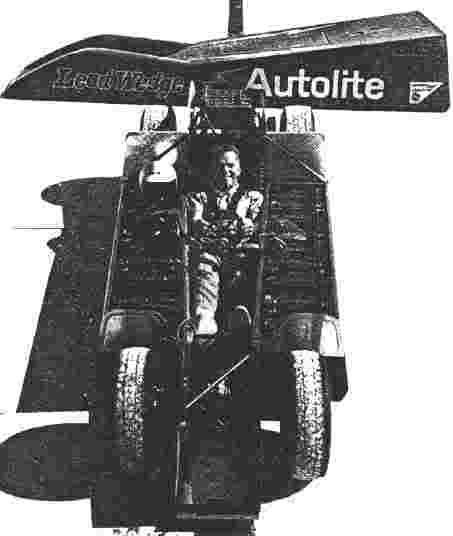
The man who would break Baker’s record would be Jerry Kugel. Jerry went 138 mph at the Bonneville Salt Flats in 1968 in his vehicle the “Lead Wedge.” Jerry’s feat started the race for electric speed all over again. SPEEDACE.INFO
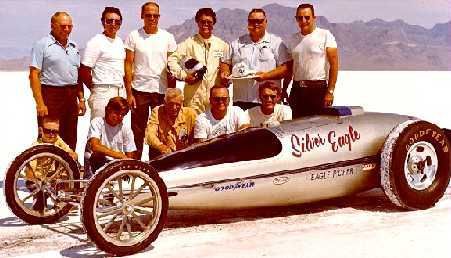
Four years later in 1972 a 40 year old Jack Reed drove the Silver Eagle to a world land speed record for an electric vehicle reaching 146.4 miles per hour using 180 silver-zinc power cells. The same type of cells used on the Apollo 15 Lunar Rover. SPEEDACE.INFO
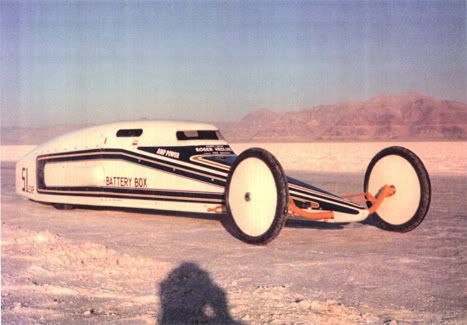
Two years later, on August 23rd 1974, Roger Hedlund takes his vehicle named the Battery Box to 175 mph. This record stands for 23 years. NEDRA
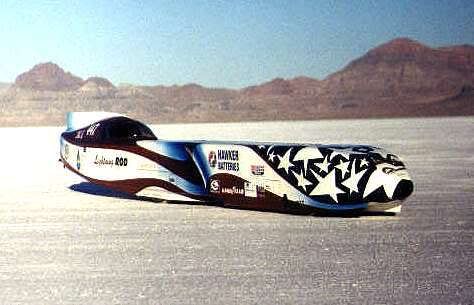
Lighting Rod was the first Electric car to set records over 200 mph and it did so on October 15, 1997. The record speed being 215.3 mph. SPEEDACE.INFO
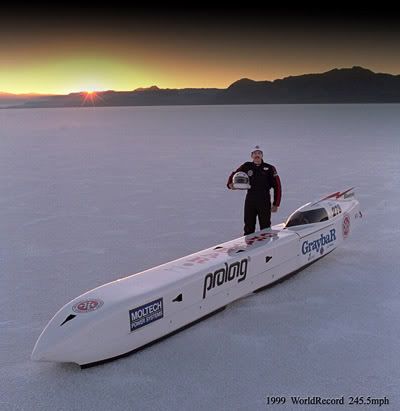
Pat Rummerfield reached the world record speed of 245.523 mph in October of 1999 at the Bonneville Salt Flats in the Dempsey World Record Associates’ electric streamliner, the White Lightning, which used over 6,000 sub-C size NiMH cells to produce 400 volts. SPEEDACE.INFO
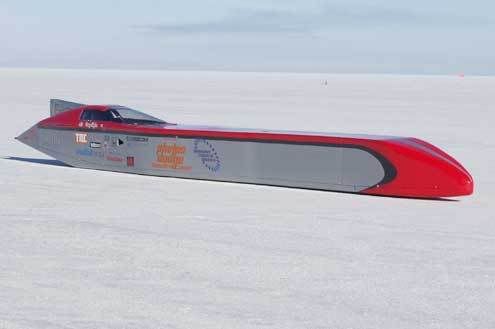
On October 14th of 2004 Ohio State University’s Buckeye Bullet set a new world record attaining speeds of 271.737 mph. Ohio State University
Since then there have been several unsuccessful attempts at breaking 300 miles an hour. The Buckeye Bullet has been driven over 300 miles an hour and holds a US record, but has yet to do the requirements to make its time an official world record.
The need for speed seems to be a fundamental part of mechanized transportation. For the past 6 years a group of dedicated enthusiasts has put on an electric vehicle drag race to demonstrate how really powerful electric vehicles are today, and these are things built largely by back yard enthusiasts. We call this event the Power of DC. This June 2nd and 3rd we are doing it again only the demonstration has been greatly expanded. In the years past we only held an electric vehicle drag race. This year we are holding the drag race again at the Mason Dixon drag way on June 3rd; however, this year we added a whole new day to do an automobile autocross. A typical autocross is a series of timed events. It is like auto racing only instead of racing side by side you race one at a time against the other racers times. The areas of focus for our event are AutoCross, ScooterCross, Range Rally (8.5 miles), and Show-n-Shine. Go see the Power of DC.
Because of the greatly expanded event we need money. Not big money. These events are mostly operated by volunteers, but little money. Money for trophies, money for the use of the venues, money to rent equipment needed maintain human intestinal comfort, banners, literature and more. A small check of $10 to $20 dollars would be very useful and greatly appreciated. Made your check out to EVA/DC putting in the memo “Power of DC” and send it to:
EVA/DC
4314 Ann Fitz Hugh Drive
Annandale, VA 22003.
The Electric Vehicle Association of Greater Washington, D.C. is a non profit (501 [c]3) organization so your contributions are tax deductible.
The event was covered by the Discovery Channel in the past you can follow the link to the Electric Dragster if you want to see a video and get a sense of the event.




